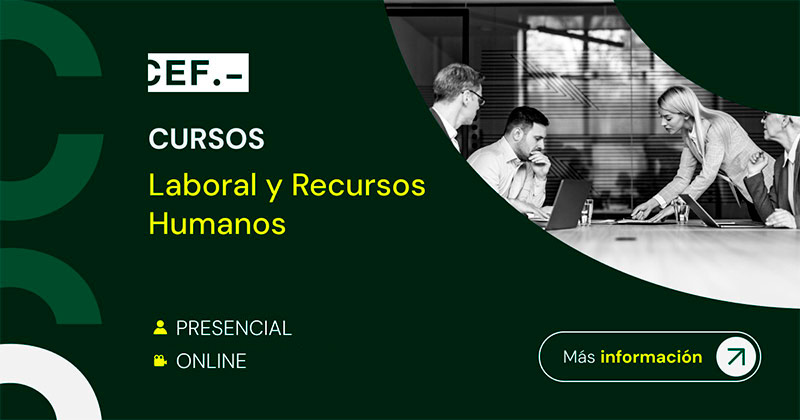Recursos humanos. El doble rol de la inversión en recursos humanos en la desigualdad social
Este trabajo ha obtenido el Premio Estudios Financieros 2020 en la modalidad de Recursos Humanos.
Una cuestión clave pendiente de resolución es reconocer cuál es el papel de la gestión de los recursos humanos (RR. HH.) en el logro de un desarrollo sostenible. El propósito de esta investigación es avanzar en este vínculo empresa-sociedad, centrando la atención en la repercusión de la inversión en RR. HH. sobre la desigualdad social. Basándose en la literatura sobre sostenibilidad, se propone que la inversión en RR. HH. y el equilibrio organizativo de las empresas reducen la desigualdad social. El equilibrio organizativo representa la equidad entre los intereses de personas empleadas y empresa, definiéndose en función del ajuste entre inversión en RR. HH. y productividad laboral. Por consiguiente, la inversión en RR. HH. presenta un doble papel al actuar como componente del equilibrio organizativo y como antecedente de la desigualdad social. A partir del análisis longitudinal de una amplia muestra de 2.051 empresas españolas durante un periodo de 5 años (2012-2016), los resultados corroboran que cuanto mayor sea el equilibrio organizativo, menor será la desigualdad social. Esta influencia se constata cuando se considera conjuntamente el efecto directo y el efecto indirecto, vía inversión en RR. HH., del equilibrio organizativo sobre la desigualdad social. Una relación de intercambio social equitativa entre personas empleadas y empresa caracteriza la sostenibilidad corporativa y mejora el desarrollo sostenible de la sociedad al limitar su nivel de desigualdad social.
Palabras clave: gestión sostenible de los recursos humanos; inversión en recursos humanos; desigualdad de ingresos; sostenibilidad social; objetivos de desarrollo sostenible; empresa y sociedad..
Vicente Roca Puig
Catedrático de Organización de Empresas.
Universitat Jaume I
Puede adquirir este documento en la página web ceflegal.com
RTSS. CEF. NÚM. 451 (octubre 2020)
Referencias bibliográficas
Agyeman, Julian; Bullard, Robert D. y Evans, Bob. (2002). Exploring the nexus: Bringing together sustainability, environmental justice and equity. Space and Polity, 6(1), 77-90. https://doi.org/10.1080/13562570220137907.
Annoni, Paola; Dijkstra, Lewis y Gargano, Nadia. (2017). The EU regional competitiveness index 2016. Working Papers, 02/2017. Regional and Urban Policy, European Commission. https://ec.europa.eu/regional_policy/sources/docgener/work/201701_regional_competitiveness2016.pdf.
Awan, Usama; Kraslawski, Andrzej y Huiskonen, Janne. (2018) Governing interfirm relationships for social sustainability: The relationship between governance mechanisms, sustainable collaboration, and cultural intelligence. Sustainability, 10(12), 4473. https://doi.org/10.3390/su10124473.
Barrena Martínez, Jesús; López Fernández, Macarena y Romero Fernández, Pedro M. (2016). Corporate social responsibility: Evolution through institutional and stakeholder perspectives. European Journal of Management and Business Economics, 25(1), 8-14. https://doi.org/10.1016/j.redee.2015.11.002.
Bentler, Peter M. (2006). EQS 6 Structural Equation Program Manual. Multivariate Software, Inc.
Birdi, Kamal; Clegg, Chris; Patterson, Malcolm; Robinson, Andrew; Stride, Chris B.; Wall, Toby D. y Wood, Stephen J. (2008). The impact of human resource and operational management practices on company productivity: A longitudinal study. Personnel Psychology, 61(3), 467-501. https://doi.org/10.1111/j.1744-6570.2008.00136.x.
Boxall, Peter y Purcell, John. (2000). Strategic human resource management: Where have we come from and where should we be going? International Journal of Management Reviews, 2(2), 183-203. https://doi.org/10.1111/1468-2370.00037.
Chams, Nour y García Blandón, Josep. (2019). On the importance of sustainable human resource management for the adoption of sustainable development goals. Resources, Conservation and Recycling, 141, February, 109-122. https://doi.org/10.1016/j.resconrec.2018.10.006.
Cobb, J. Adam. (2016). How firms shape income inequality: Stakeholder power, executive decision making and the structuring of employment relationships. Academy of Management Review, 41(2), 324-348. https://doi.org/10.5465/amr.2013.0451.
Cobb, J. Adam y Stevens, Flannery G. (2017). These unequal states: Corporate organization and income inequality in the United States. Administrative Science Quarterly, 62(2), 304-340. https://doi.org/10.1177/0001839216673823.
Cole, David A. y Maxwell, Scott E. (2003). Testing mediational models with longitudinal data: Questions and tips in the use of structural equation modeling. Journal of Abnormal Psychology, 112(4), 558-577. https://doi.org/10.1037/0021-843X.112.4.558.
Datta, Deepak K.; Guthrie, James P. y Wright, Patrick M. (2005). Human resource management and labor productivity: does industry matter? Academy of Management Journal, 48(1), 135-145. https://doi.org/10.5465/amj.2005.15993158.
De Menezes, Lilian M.; Wood, Stephen y Gelade, Garry. (2010). The integration of human resource and operation management practices and its link with performance: A longitudinal latent class study. Journal of Operation Management, 28(6), 455-471. https://doi.org/10.1016/j.jom.2010.01.002.
Di Vaio, Assunta; Palladino, Rosa; Hassan, Rohail y Alvino, Federico. (2020). Human resources disclosure in the EU Directive 2014/95/EU perspective: A systematic literature review. Journal of Cleaner Production (in press). https://doi.org/10.1016/j.jclepro.2020.120509.
Ehnert, Ina; Harry, Wes y Zink, Klaus J. (2014). Sustainability and HRM. En Ina Ehnert, Wes Harry y Klaus J. Zink (Eds.), Sustainability and Human Resource Management (pp. 3-32). CSR, Sustainability, Ethics & Governance. Springer, Berlin Heidelberg.
Eizenberg, Efrat y Jabareen, Yosef. (2017). Social sustainability: A new conceptual framework. Sustainability, 9(1), 68. https://doi.org/10.3390/su9010068.
Esteban Yago, Miguel A. y Losa Carmona, Antonio. (2015). Guía básica para interpretar los indicadores de desigualdad, pobreza y exclusión social. European Antipoverty Network (EAPN). https://www.eapn.es/ARCHIVO/documentos/documentos/1446118622_guia_basica_indicadores_desigualdad_pobreza_y_exclusion_social.pdf.
Fundación SEPI. (2019). Encuesta sobre estrategias empresariales (ESEE). https://www.fundacionsepi.es/investigacion/esee/spresentacion.asp.
Garriga, Elisabet y Melé, Domènec. (2004). Corporate social responsibility theories: Mapping the territory. Journal of Business Ethics, 53, 51-71. https://doi.org/10.1023/B:BUSI.0000039399.90587.34.
Huselid, Mark A. (1995). The impact of human resource management practices on turnover, productivity, and corporate financial performance. Academy of Management Journal, 38(3), 635-672. https://doi.org/10.5465/256741.
Iceland, John. (2003). Why poverty remains high: The role of income growth, economic inequality, and changes in family structure, 1949-1999. Demography, 40, 499-519. https://doi.org/10.1353/dem.2003.0025.
Jabbour, Charbel J. y Santos, Fernando C. (2008). The central role of human resource management in the search for sustainable organizations. International Journal of Human Resource Management, 19(12), 2133-2154. https://doi.org/10.1080/09585190802479389.
Jerónimo Silvestre, Winston; Antunes, Paula y Leal Filho, Walter. (2018). The corporate sustainability typology: Analysing sustainability drivers and fostering sustainability at enterprises. Technological and Economic Development of Economy, 24(2), 513-533. https://doi.org/10.3846/20294913.2016.1213199.
Kelliher, Clare y Perret, Gilly. (2001). Business strategy and approaches to HRM: A case study of new developments in the United Kingdom restaurant industry, Personnel Review, 30(4), 421-437. https://doi.org/10.1108/00483480110393303.
Kramar, Robin. (2014). Beyond strategic human resource management: Is sustainable human resource management the next approach? International Journal of Human Resource Management, 25(8), 1069-1089. https://doi.org/10.1080/09585192.2013.816863.
Little, Todd D. (2013). Longitudinal structural equation modeling. Guilford Press.
Liu, Qianqian; Wang, Shaojian; Zhang, Wenzhong y Li, Jiaming. (2018). Income distribution and environmental quality in China: A spatial econometric perspective. Journal of Cleaner Production, 205, 14-26. https://doi.org/10.1016/j.jclepro.2018.09.090.
Llano Ortiz, Juan C. (2016). El estado de la pobreza. Seguimiento del indicador de riesgo de pobreza y exclusión social en España 2009-2015. European Antipoverty Network (EAPN). https://www.eapn.es/estadodepobreza/ARCHIVO/documentos/Informe_AROPE_2016.pdf.
López Cabrales, Álvaro y Valle Cabrera, Ramón. (2020). Sustainable HRM strategies and employment relationships as drivers of the triple bottom line. Human Resource Management Review, 30(3), 100689. https://doi.org/10.1016/j.hrmr.2019.100689.
Maas, Cora J. y Hox, Joop J. (2005). Sufficient sample sizes for multilevel modeling. Methodology, 1(3), 86-92. https://doi.org/10.1027/1614-2241.1.3.86.
March, James G. y Simon, Herbert A. (1958). Organizations. Wiley.
Marens, Richard. (2018). Laying the foundation: Preparing the field of business and society for investigating the relationship between business and inequality. Business & Society, 57(6), 1252-1285. https://doi.org/10.1177/0007650316679990.
Miller, Danny y Lee, Jangwoo. (2001). The people make the process: commitment to employees, decision making, and performance. Journal of Management, 27(2), 163-189. https://doi.org/10.1177/014920630102700203.
Muñoz Martín, Juan. (2013). Business ethics, corporate social responsibility (CSR) and creating shared value (CSV). Journal of Globalization, Competitiveness & Governability, 7(3), 76-88. https://doi.org/10.3232/GCG.2013.V7.N3.05.
Muse, Lori A.; Rutherford, Matthew W.; Oswald, Sharon L. y Raymond, Jennie E. (2005). Commitment to employees: Does it help or hinder small firm performance? Small Business Economics, 24, 97-111. https://doi.org/10.1007/s11187-003-3098-7.
Paredes Gázquez, Juan D.; Rodríguez Fernández, José M. y de la Cuesta González, Marta. (2016). Measuring corporate social responsibility using composite indices: Mission impossible? The case of the electricity utility industry. Spanish Accounting Review, 19(1), 142-153. https://doi.org/10.1016/j.rcsar.2015.10.001.
Pfeffer, Jeffrey. (2010). Building sustainable organizations: The human factor. Academy of Management Perspectives, 24(1), 34-45. https://doi.org/10.5465/amp.24.1.34.
Piacentini, Mario. (2014). Measuring income inequality and poverty at the regional level in OECD countries. Statistics Working Papers, 2014/03. OECD Publishing. https://doi.org/10.1787/5jxzf5khtg9t-en.
Piketty, Thomas. (2014). Capital in the twenty-first century. Harvard University Press.
Podgorodnichenko, Nataliya; Edgar, Fiona y McAndrew, Ian. (2020). The role of HRM in developing sustainable organizations: Contemporary challenges and contradictions. Human Resource Management Review, 30(3), 00685. https://doi.org/10.1016/j.hrmr.2019.04.001.
Porter, Michael E. y Kramer, Mark R. (2006). Strategy and society: The link between competitive advantage and corporate social responsibility. Harvard Business Review, December, 77-92.
Porter, Michael E. y Kramer, Mark R. (2011). Creating shared value. Harvard Business Review, January-February, 1-17.
Roca Puig, Vicente. (2018). Sostenibilidad humana de la sociedad y de la empresa: ¿vasos comunicantes? Revista de Trabajo y Seguridad Social. CEF, 425-426, 205-234. https://www.laboral-social.com/sostenibilidad-humana-sociedad-empresa-vasos-comunicantes.html.
Rodríguez Fernández, José M. (2008). Modelo stakeholder y responsabilidad social: el gobierno corporativo global. M@n@gement, 11(2), 81-111. https://doi.org/10.3917/mana.112.0081.
Santana, Mónica y López Cabrales, Álvaro. (2019). Sustainable development and human resource management: A science mapping approach. Corporate Social Responsibility and Environmental Management, 26(6), 1171-1183. https://doi.org/10.1002/csr.1765.
Santos, Maria J. (2014). Theoretical contributions towards rethinking corporate social responsibility. Management Research: The Journal of the Iberoamerican Academy of Management, 12(3), 288-307. https://doi.org/10.1108/MRJIAM-12-2013-0533.
Saridakis, George; Lai, Yanqing y Cooper, Cary L. (2017). Exploring the relationship between HRM and firm performance: A meta-analysis of longitudinal studies. Human Resource Management Review, 27(1), 87-96. https://doi.org/10.1016/j.hrmr.2016.09.005.
Stahl, Günter K.; Brewster, Chris J.; Collings, David G. y Hajro, Aida. (2020). Enhancing the role of human resource management in corporate sustainability and social responsibility: A multi-stakeholder, multidimensional approach to HRM. Human Resource Management Review, 30(3), 100708. https://doi.org/10.1016/j.hrmr.2019.100708.
Stiglitz, Joseph E. (2012). The price of inequality. W. W. Norton.
Stubbs, Wendy y Cocklin, Chris. (2008). Conceptualizing a «sustainability business model». Organization & Environment, 21(2), 103-127. https://doi.org/10.1177/1086026608318042.
Subramony, Mahesh; Krause, Nicole; Norton, Jacqueline y Burns, Gary. (2008). The relationship between human resource investments and organizational performance: A firm-level examination of equilibrium theory. Journal of Applied Psychology, 93(4), 778-788. https://doi.org/10.1037/0021-9010.93.4.778.
Tolbert, Pamela S. y Castilla, Emilio J. (2017). Editorial essay: Introduction to a special issue on inequality in the workplace («what works?»). Industrial and Labor Relations Review, 70(1), 3-15. https://doi.org/10.1177/0019793916675336.
Tsui, Anne S.; Enderle, Georges y Jiang, Kaifeng. (2018). Income inequality in the United States: Reflections on the role of corporations. Academy of Management Review, 43(1), 156-168. https://doi.org/10.5465/amr.2016.0527.
Tsui, Anne S.; Pearce, Jone L.; Porter, Lyman W. y Tripoli, Angela M. (1997). Alternative approaches to the employee-organization relationship: Does investment in employees pay off? Academy of Management Journal, 40(5), 1089-1121. https://doi.org/10.5465/256928.
Venkatraman, Nenkat. (1990). Performance implications of strategic coalignment: A methodological perspective. Journal of Management Studies, 27(1), 19-41. https://doi.org/10.1111/j.1467-6486.1990.tb00751.x.
Wilden, Ralf; Hohberger, Jan; Devinney, Timothy M. y Lumineau, Fabrice. (2019). 60 Years of March and Simon’s Organizations: An empirical examination of its impact and influence on subsequent research. Journal of Management Studies, 56(8), 1570-1604. https://doi.org/10.1111/joms.12531.
Wilkinson, Richard G. y Pickett, Kate E. (2009). The spirit level. Why more equal societies almost always do better. Allen Lane.
Zink, Klaus J. (2014). Social sustainability and quality of working life. En Ina Ehnert, Wes Harry y Klaus J. Zink (Eds.), Sustainability and Human Resource Management (pp. 35-55). CSR, Sustainability, Ethics & Governance. Springer, Berlin Heidelberg.







